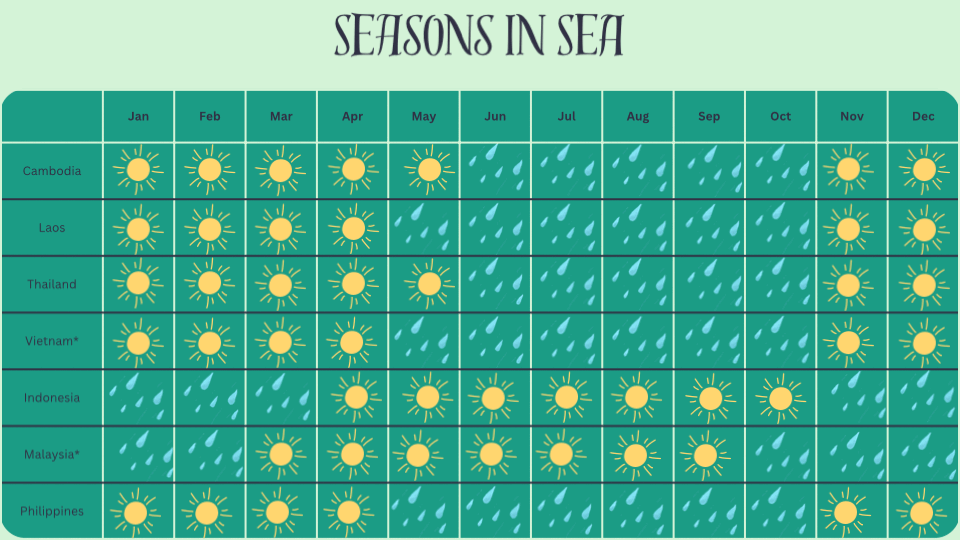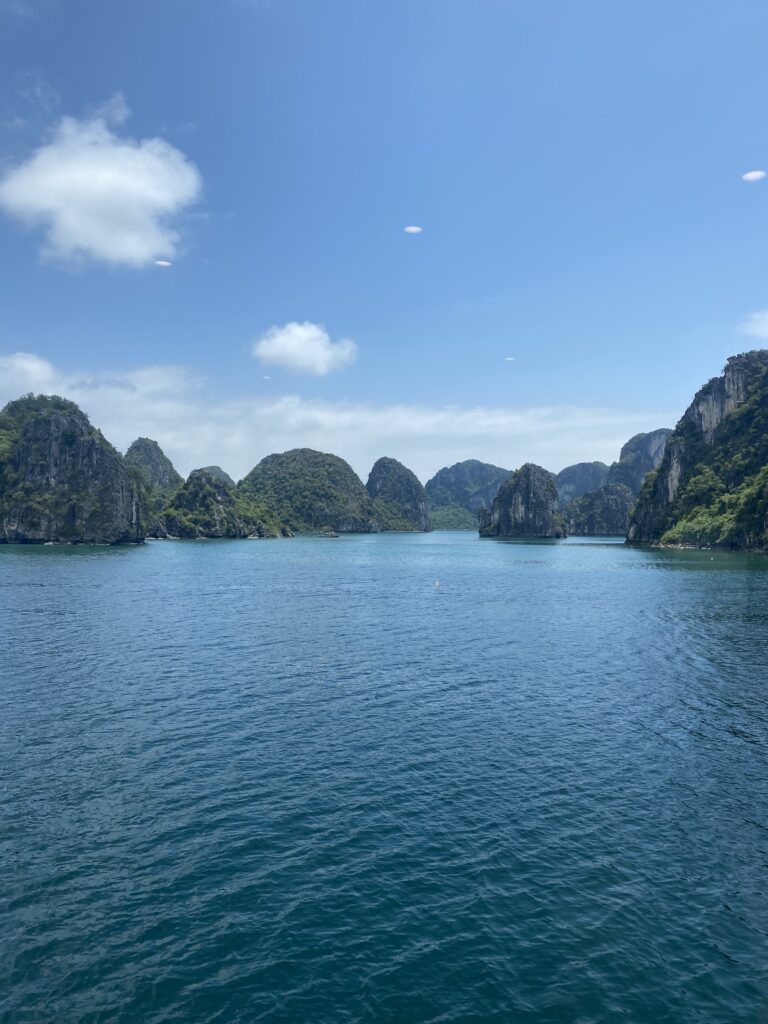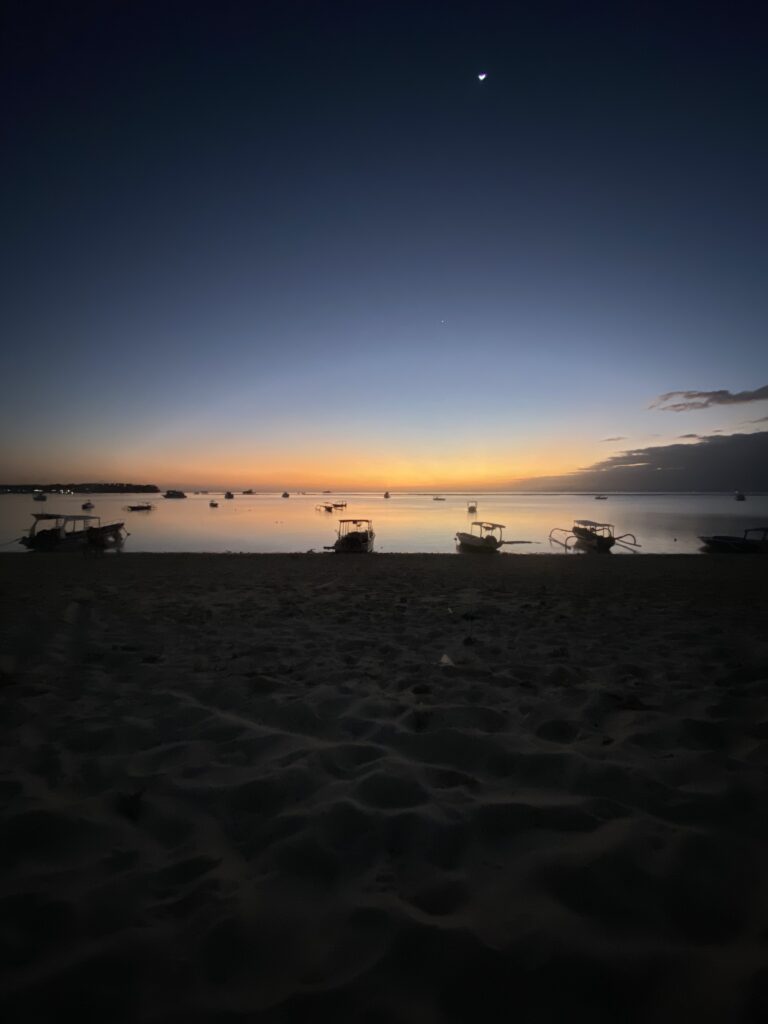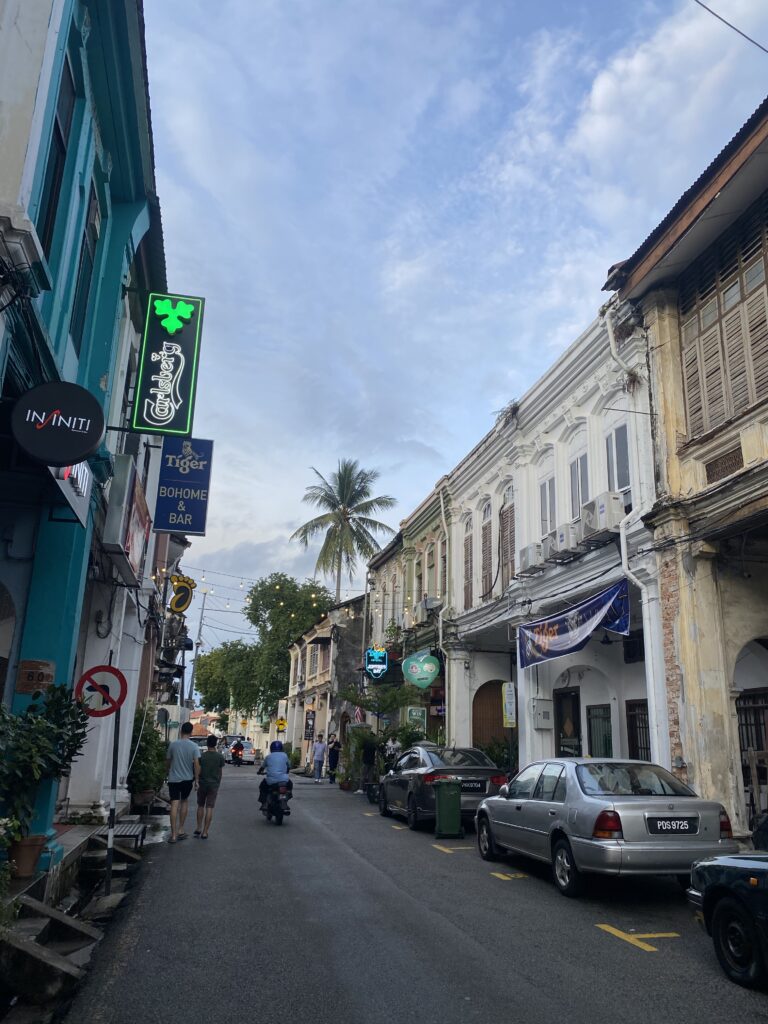
When we think of Southeast Asia, images of clear blue skies, pristine white beaches, and lush green landscapes often come to mind. But it’s easy to forget that this stunning greenery owes much to the heavy rains that fall throughout much of the year.

Southeast Asian countries typically experience two main seasons: the wet season and the dry season. The dry season is further divided into cool and hot periods, each bringing its own unique weather and travel advantages. If you’re planning a trip to Southeast Asia, it’s essential to check the season for your intended travel dates. Visiting during the peak of the wet season can mean days of rain, and flooding can often disrupt public transportation, making some areas difficult to explore.
Planning around the seasons can help you make the most of your trip, whether you’re after beach days, vibrant festivals, or scenic treks through the region’s lush landscapes.
When is the best time to travel?
Cambodia
The best time to visit Cambodia is during the dry season, from November to April, when the weather is cooler and rainfall is minimal. This is the ideal time for exploring temples in Siem Reap, like Angkor Wat, and sightseeing in Phnom Penh. For fewer tourists and pleasant weather, November and February are especially good, as temperatures are mild before the hotter months of March and April arrive.
If you’re travelling during the dry season, a factor to consider is the lunar new year. This is going to have heavy crowds as not only tourists but locals will travel to celebrate. Best to avoid high costs and lots of crowds.
Laos
Visit Laos between November to March, during the dry season when temperatures are mild and humidity is lower. This period is perfect for outdoor activities like exploring temples in Luang Prabang, trekking, and visiting natural sites like the Kuang Si Falls. January and February are particularly pleasant, as temperatures are cooler before the hotter months of March and April set in. Avoid Laos in April as this is the hottest time of the year and also coincides with the Pi Mai celebrations.
Thailand
Thailand between November to early April during the dry season, has cooler, pleasant weather for sightseeing and outdoor activities. Bangkok and Central Thailand – November to February offers comfortable weather; March to May can get very hot.
Northern Thailand (Chiang Mai, Chiang Rai) – November to February is ideal for cooler temperatures and trekking, though March to May can bring smoky air from crop burning.
Southern Thailand such as the Andaman Coast (Phuket, Krabi) is best from November to March for dry, sunny beach days. Whereas the Gulf Coast (Koh Samui, Koh Phangan) is ideal from December to April.
The rainy season (April–October) is quieter and often less crowded, though still scenic, especially early in the season.



Vietnam
The seasons in Vietnam are slightly different as the country is so long (latitudinal) the weather in the north is different to the weather in the south. The north typically experiences the 4 seasons; spring, summer, autumn and winter. The south experiences the typical SEA 2 seasons; wet and dry.
In Northern Vietnam, October to December is ideal for trekking and sightseeing with mild temperatures, while January to March can be cool and misty.
For Central Vietnam (Hue, Da Nang, Hoi An), February to April is best for warm, dry weather. The rainy season, from September to January, can bring heavy showers and occasional typhoons.
Southern Vietnam, December to April offers dry, sunny days, making it perfect for exploring the delta and beaches.
Though Vietnam’s monsoon season (May–October) can bring rain, it’s often intermittent, and you’ll find lush landscapes and fewer tourists. The best time to visit Vietnam is on the verge of the rainy season (June/July) as the weather is hot in both regions however it is still considered the low season period.
Indonesia
Indonesia is hot all year round however some parts of the year experience heavy rainfall and flooding. The ideal time is from April to October, during the dry season. This is perfect for exploring Bali, Java, and other islands, as you’ll find warm weather and low rainfall. July and August are peak months with higher prices and crowds, so visiting in April, May, or September can provide a similar experience with fewer tourists.
Malaysia
The best time to visit Malaysia is generally from March to early October, during the dry season when weather is favourable across much of the country. On the west coast (Langkawi, Penang, Kuala Lumpur), November to March is ideal for sunny, warm days. For the east coast (Perhentian Islands, Tioman Island), the period between April and September is perfect for beach and water activities, as monsoon rains have subsided. The highlands (e.g., Cameron Highlands) are pleasant year-round, with the driest months from March to August.


Philippines
In the Philippines, the best time to visit is during the dry season from November to April. This period offers warm, sunny days, ideal for beach activities and island-hopping across popular spots like Palawan and Boracay. For fewer crowds, consider travelling in November or March when the weather is good, but the peak tourist season hasn’t fully started.
As you can see from my pictures, almost all of them have been taken during the shoulder season or wet season but there’s not a dark cloud in site. Don’t get me wrong, we experienced our fair share of heavy rain but that’s not to say it rains 24/7.